Daniela Moctezuma
VCRScore: Image captioning metric based on V\&L Transformers, CLIP, and precision-recall
Jan 15, 2025Abstract:Image captioning has become an essential Vision & Language research task. It is about predicting the most accurate caption given a specific image or video. The research community has achieved impressive results by continuously proposing new models and approaches to improve the overall model's performance. Nevertheless, despite increasing proposals, the performance metrics used to measure their advances have remained practically untouched through the years. A probe of that, nowadays metrics like BLEU, METEOR, CIDEr, and ROUGE are still very used, aside from more sophisticated metrics such as BertScore and ClipScore. Hence, it is essential to adjust how are measure the advances, limitations, and scopes of the new image captioning proposals, as well as to adapt new metrics to these new advanced image captioning approaches. This work proposes a new evaluation metric for the image captioning problem. To do that, first, it was generated a human-labeled dataset to assess to which degree the captions correlate with the image's content. Taking these human scores as ground truth, we propose a new metric, and compare it with several well-known metrics, from classical to newer ones. Outperformed results were also found, and interesting insights were presented and discussed.
Are metrics measuring what they should? An evaluation of image captioning task metrics
Jul 04, 2022

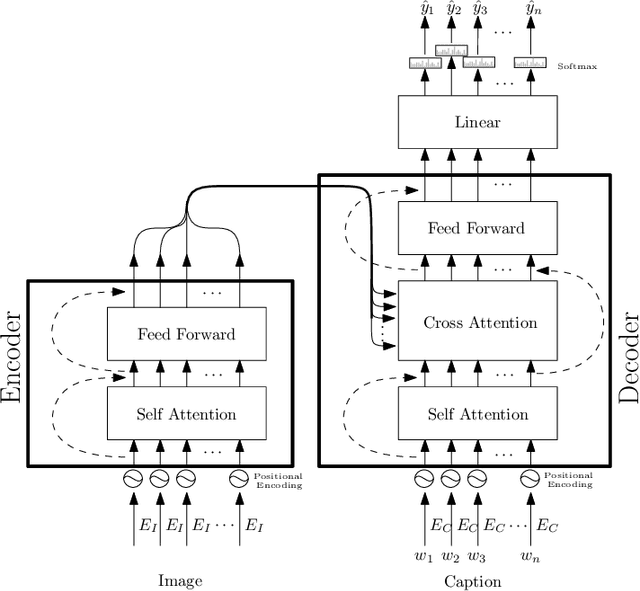

Abstract:Image Captioning is a current research task to describe the image content using the objects and their relationships in the scene. To tackle this task, two important research areas are used, artificial vision, and natural language processing. In Image Captioning, as in any computational intelligence task, the performance metrics are crucial for knowing how well (or bad) a method performs. In recent years, it has been observed that classical metrics based on n-grams are insufficient to capture the semantics and the critical meaning to describe the content in an image. Looking to measure how well or not the set of current and more recent metrics are doing, in this manuscript, we present an evaluation of several kinds of Image Captioning metrics and a comparison between them using the well-known MS COCO dataset. For this, we designed two scenarios; 1) a set of artificially build captions with several quality, and 2) a comparison of some state-of-the-art Image Captioning methods. We tried to answer the questions: Are the current metrics helping to produce high quality captions? How do actual metrics compare to each other? What are the metrics really measuring?
Video Captioning: a comparative review of where we are and which could be the route
Apr 13, 2022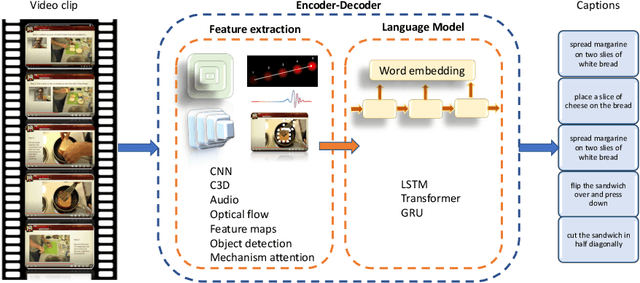



Abstract:Video captioning is the process of describing the content of a sequence of images capturing its semantic relationships and meanings. Dealing with this task with a single image is arduous, not to mention how difficult it is for a video (or images sequence). The amount and relevance of the applications of video captioning are vast, mainly to deal with a significant amount of video recordings in video surveillance, or assisting people visually impaired, to mention a few. To analyze where the efforts of our community to solve the video captioning task are, as well as what route could be better to follow, this manuscript presents an extensive review of more than 105 papers for the period of 2016 to 2021. As a result, the most-used datasets and metrics are identified. Also, the main approaches used and the best ones. We compute a set of rankings based on several performance metrics to obtain, according to its performance, the best method with the best result on the video captioning task. Finally, some insights are concluded about which could be the next steps or opportunity areas to improve dealing with this complex task.
A large scale lexical and semantic analysis of Spanish language variations in Twitter
Oct 12, 2021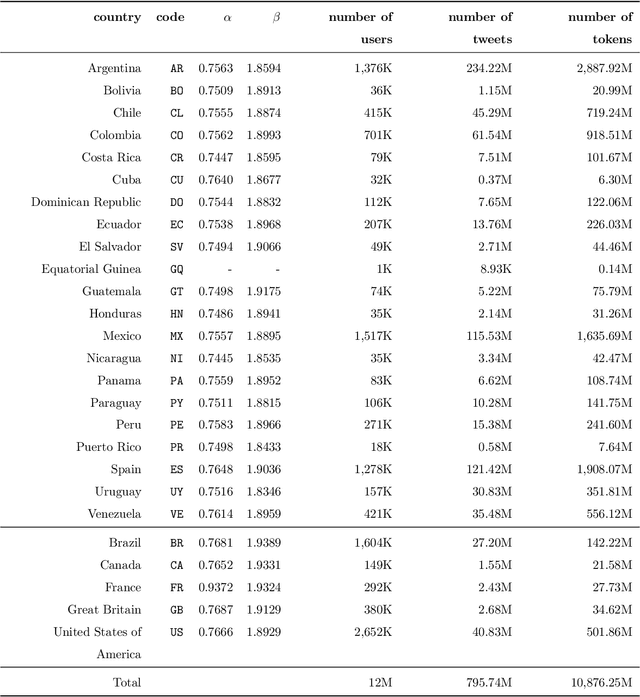


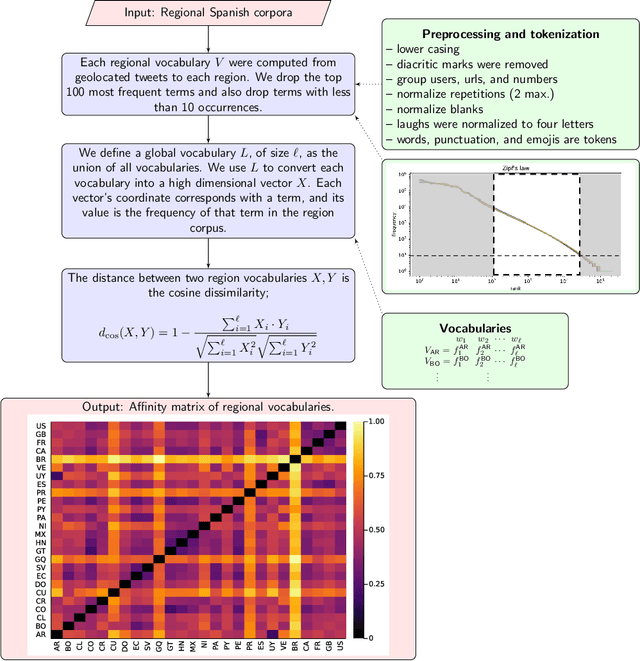
Abstract:Dialectometry is a discipline devoted to studying the variations of a language around a geographical region. One of their goals is the creation of linguistic atlases capturing the similarities and differences of the language under study around the area in question. For instance, Spanish is one of the most spoken languages across the world, but not necessarily Spanish is written and spoken in the same way in different countries. This manuscript presents a broad analysis describing lexical and semantic relationships among 26 Spanish-speaking countries around the globe. For this study, we analyze four-year of the Twitter geotagged public stream to provide an extensive survey of the Spanish language vocabularies of different countries, its distributions, semantic usage of terms, and emojis. We also offer open regional word-embedding resources for Spanish Twitter to help other researchers and practitioners take advantage of regionalized models.
A Case Study of Spanish Text Transformations for Twitter Sentiment Analysis
Jun 03, 2021

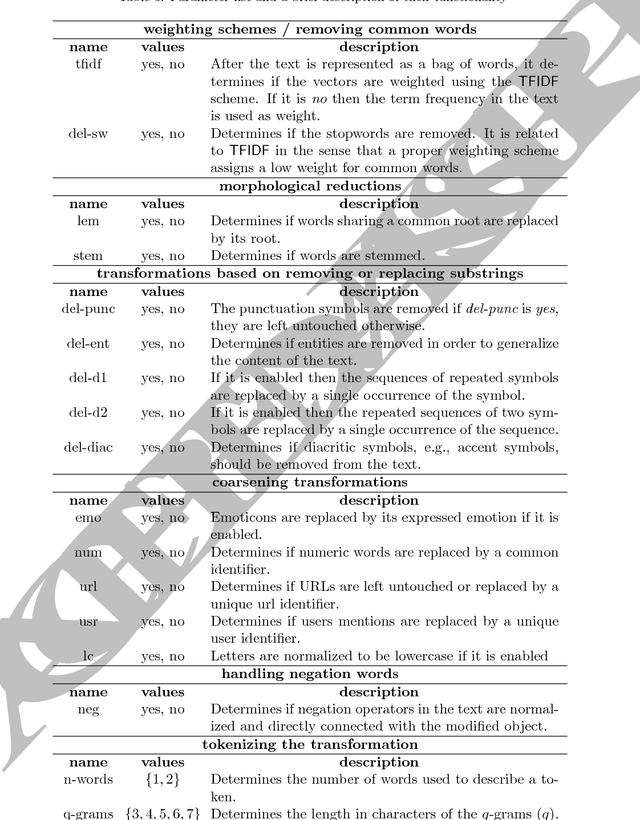
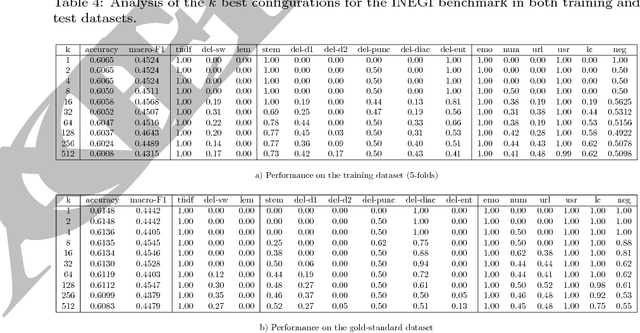
Abstract:Sentiment analysis is a text mining task that determines the polarity of a given text, i.e., its positiveness or negativeness. Recently, it has received a lot of attention given the interest in opinion mining in micro-blogging platforms. These new forms of textual expressions present new challenges to analyze text given the use of slang, orthographic and grammatical errors, among others. Along with these challenges, a practical sentiment classifier should be able to handle efficiently large workloads. The aim of this research is to identify which text transformations (lemmatization, stemming, entity removal, among others), tokenizers (e.g., words $n$-grams), and tokens weighting schemes impact the most the accuracy of a classifier (Support Vector Machine) trained on two Spanish corpus. The methodology used is to exhaustively analyze all the combinations of the text transformations and their respective parameters to find out which characteristics the best performing classifiers have in common. Furthermore, among the different text transformations studied, we introduce a novel approach based on the combination of word based $n$-grams and character based $q$-grams. The results show that this novel combination of words and characters produces a classifier that outperforms the traditional word based combination by $11.17\%$ and $5.62\%$ on the INEGI and TASS'15 dataset, respectively.
A Python Library for Exploratory Data Analysis and Knowledge Discovery on Twitter Data
Sep 03, 2020
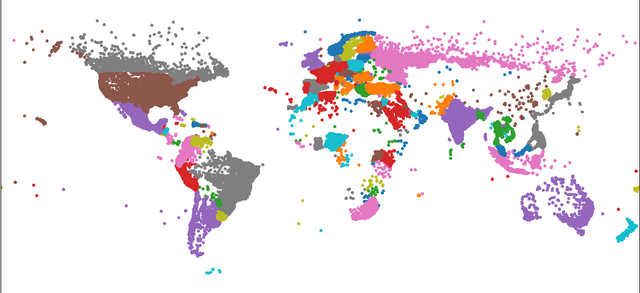
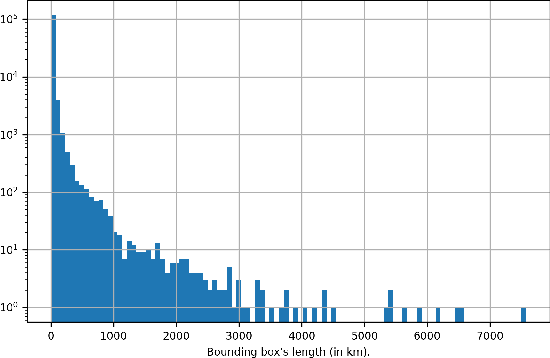
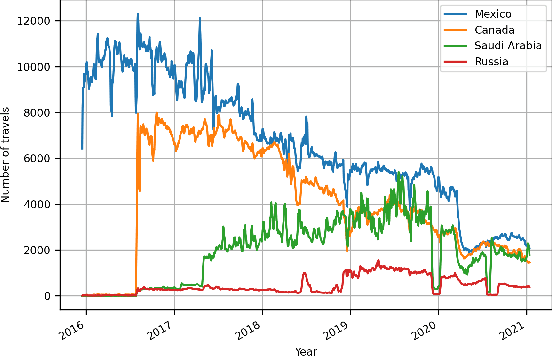
Abstract:Twitter is perhaps the social media more amenable for research. It requires only a few steps to obtain information, and there are plenty of libraries that can help in this regard. Nonetheless, knowing whether a particular event is expressed on Twitter is a challenging task that requires a considerable collection of tweets. This proposal aims to facilitate, a researcher interested in Twitter data, the process of mining events on Twitter. The events could be related to natural disasters, health issues, people's mobility, among other studies that can be pursued with the library proposed. Different applications are presented in this contribution to illustrate the library's capabilities, starting from an exploratory analysis of the topics discovered in tweets, following it by studying the similarity among dialects of the Spanish language, and complementing it with a mobility report on different countries. In summary, the Python library presented retrieves a plethora of information processed from Twitter (since December 2015) in terms of words, bigrams of words, and their frequencies by day for Arabic, English, Spanish, and Russian languages. Finally, the mobility information considered is related to the number of travels among locations for more than 245 countries or territories.
EvoMSA: A Multilingual Evolutionary Approach for Sentiment Analysis
Nov 29, 2018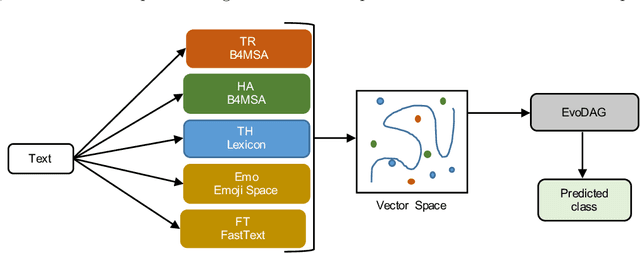
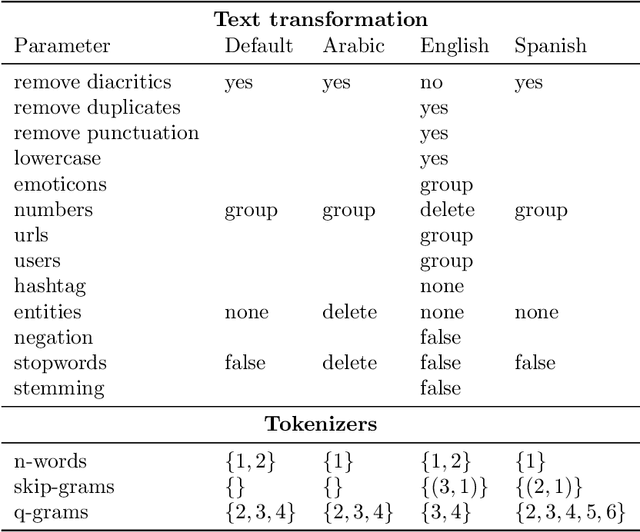
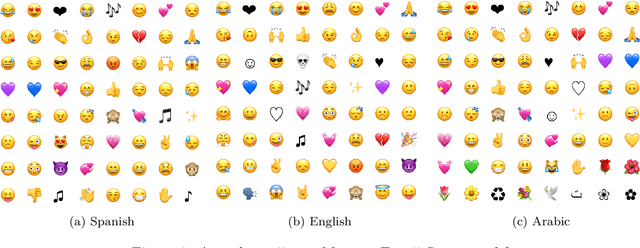
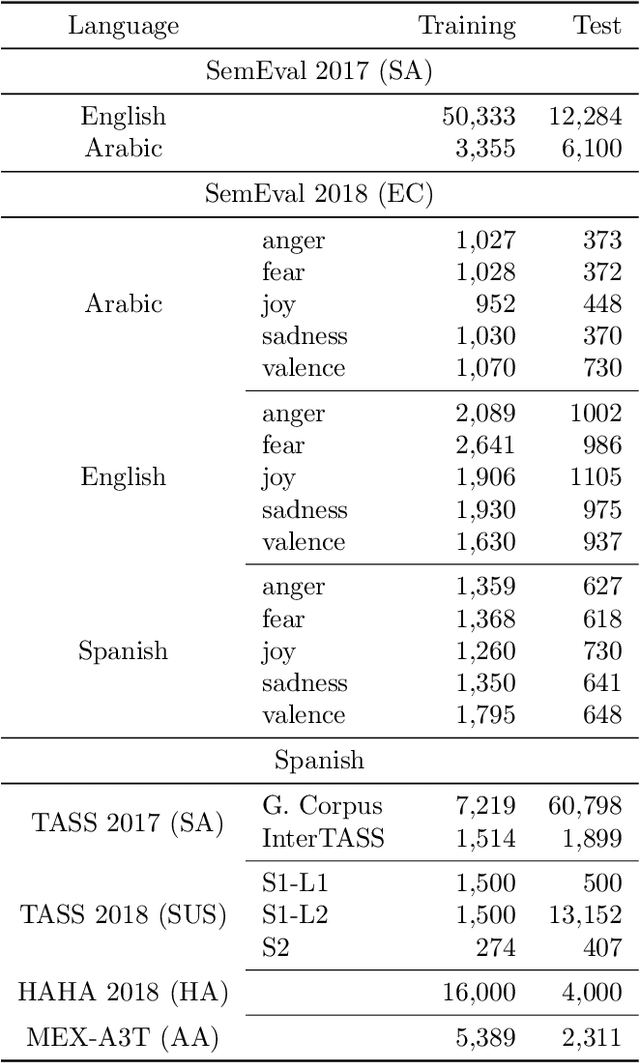
Abstract:Sentiment analysis (SA) is a task related to understanding people's feelings in written text; the starting point would be to identify the polarity level (positive, neutral or negative) of a given text, moving on to identify emotions or whether a text is humorous or not. This task has been the subject of several research competitions in a number of languages, e.g., English, Spanish, and Arabic, among others. In this contribution, we propose an SA system, namely EvoMSA, that unifies our participating systems in various SA competitions, making it domain independent and multilingual by processing text using only language-independent techniques. EvoMSA is a classifier, based on Genetic Programming, that works by combining the output of different text classifiers and text models to produce the final prediction. We analyze EvoMSA, with its parameters fixed, on different SA competitions to provide a global overview of its performance, and as the results show, EvoMSA is competitive obtaining top rankings in several SA competitions. Furthermore, we performed an analysis of EvoMSA's components to measure their contribution to the performance; the idea is to facilitate a practitioner or newcomer to implement a competitive SA classifier. Finally, it is worth to mention that EvoMSA is available as open source software.
An Automated Text Categorization Framework based on Hyperparameter Optimization
Sep 14, 2017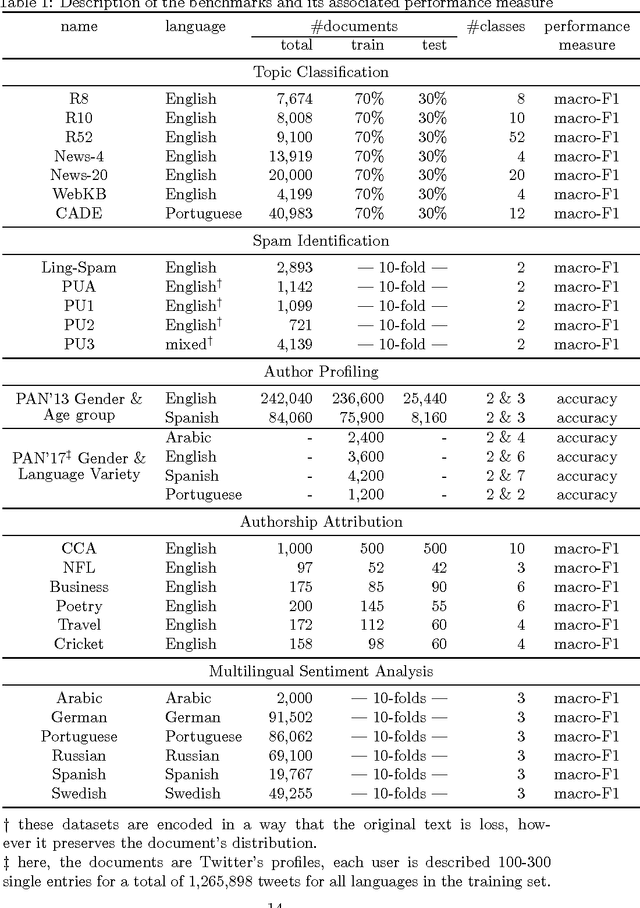
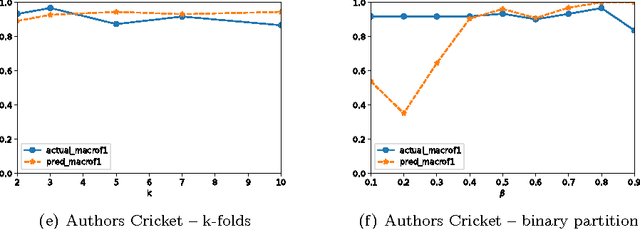

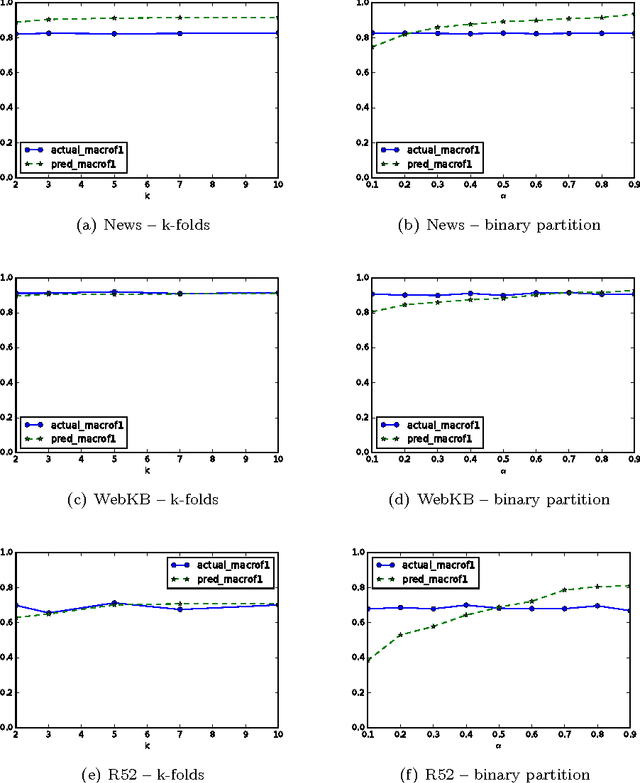
Abstract:A great variety of text tasks such as topic or spam identification, user profiling, and sentiment analysis can be posed as a supervised learning problem and tackle using a text classifier. A text classifier consists of several subprocesses, some of them are general enough to be applied to any supervised learning problem, whereas others are specifically designed to tackle a particular task, using complex and computational expensive processes such as lemmatization, syntactic analysis, etc. Contrary to traditional approaches, we propose a minimalistic and wide system able to tackle text classification tasks independent of domain and language, namely microTC. It is composed by some easy to implement text transformations, text representations, and a supervised learning algorithm. These pieces produce a competitive classifier even in the domain of informally written text. We provide a detailed description of microTC along with an extensive experimental comparison with relevant state-of-the-art methods. mircoTC was compared on 30 different datasets. Regarding accuracy, microTC obtained the best performance in 20 datasets while achieves competitive results in the remaining 10. The compared datasets include several problems like topic and polarity classification, spam detection, user profiling and authorship attribution. Furthermore, it is important to state that our approach allows the usage of the technology even without knowledge of machine learning and natural language processing.
A Simple Approach to Multilingual Polarity Classification in Twitter
Dec 15, 2016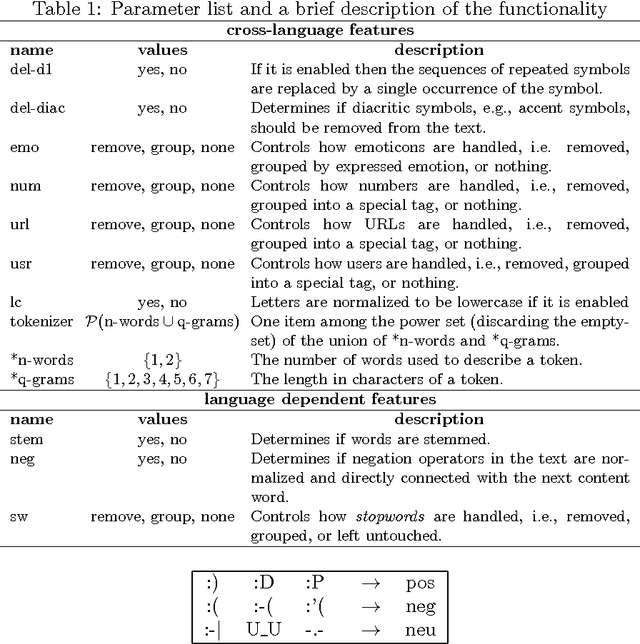
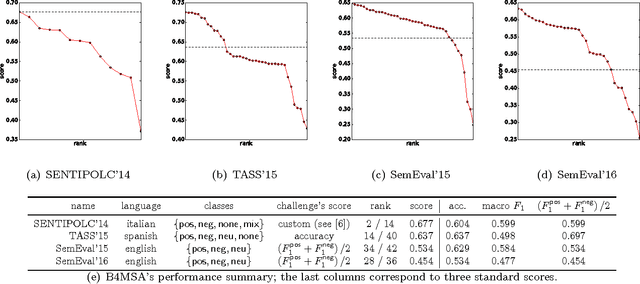
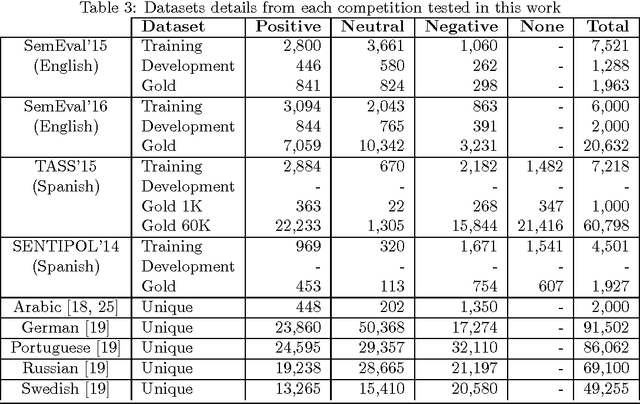

Abstract:Recently, sentiment analysis has received a lot of attention due to the interest in mining opinions of social media users. Sentiment analysis consists in determining the polarity of a given text, i.e., its degree of positiveness or negativeness. Traditionally, Sentiment Analysis algorithms have been tailored to a specific language given the complexity of having a number of lexical variations and errors introduced by the people generating content. In this contribution, our aim is to provide a simple to implement and easy to use multilingual framework, that can serve as a baseline for sentiment analysis contests, and as starting point to build new sentiment analysis systems. We compare our approach in eight different languages, three of them have important international contests, namely, SemEval (English), TASS (Spanish), and SENTIPOLC (Italian). Within the competitions our approach reaches from medium to high positions in the rankings; whereas in the remaining languages our approach outperforms the reported results.
 Add to Chrome
Add to Chrome Add to Firefox
Add to Firefox Add to Edge
Add to Edge